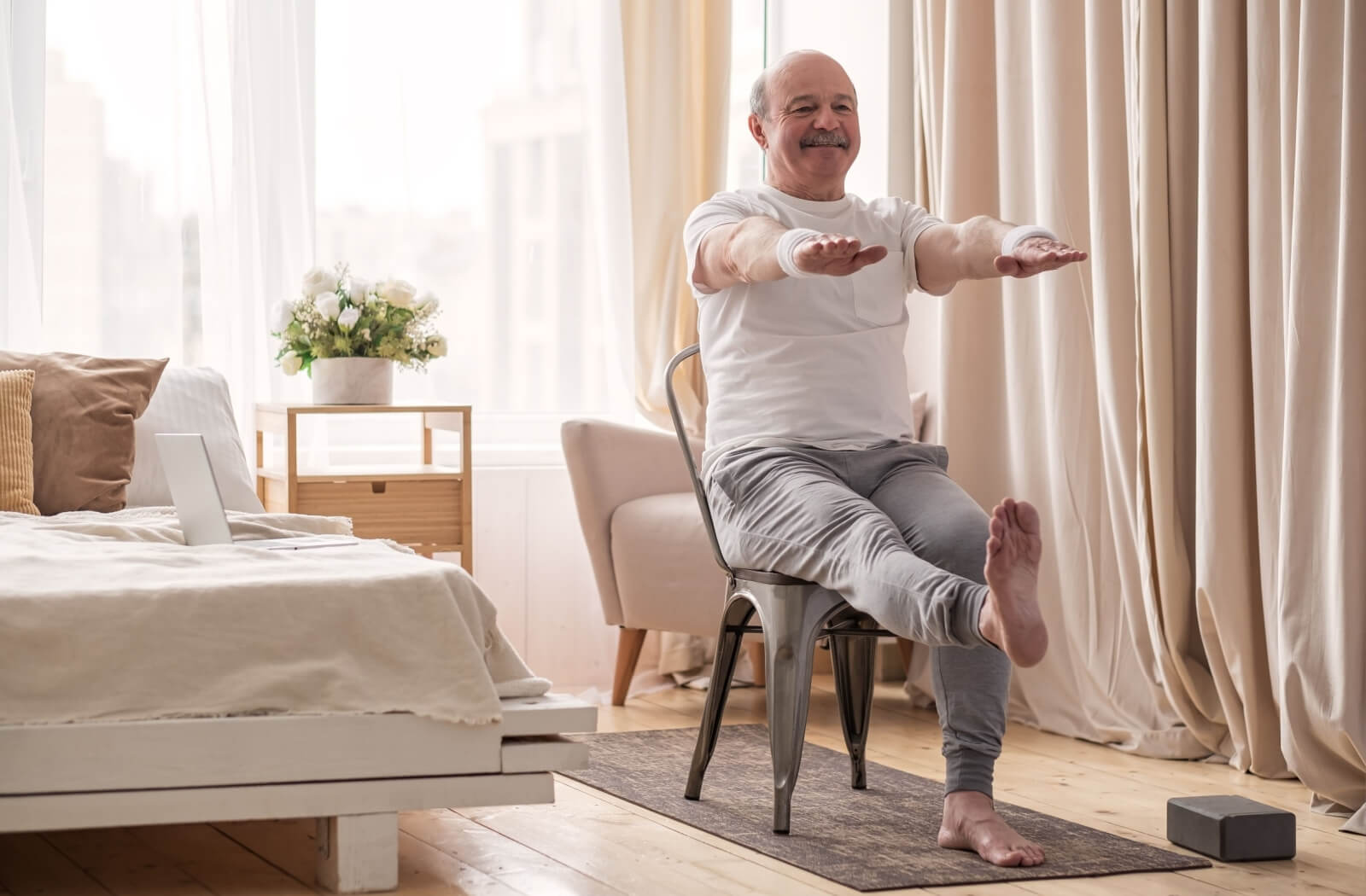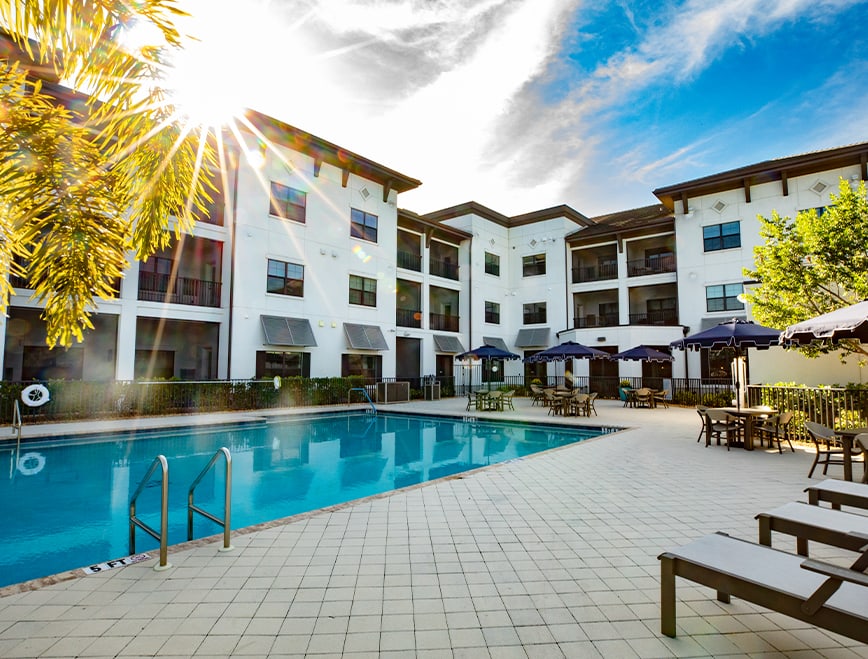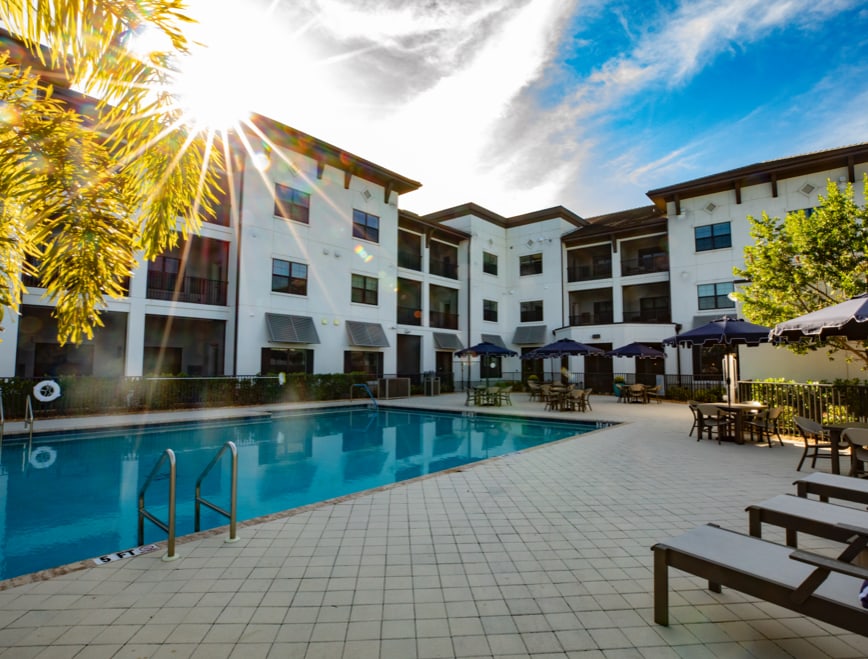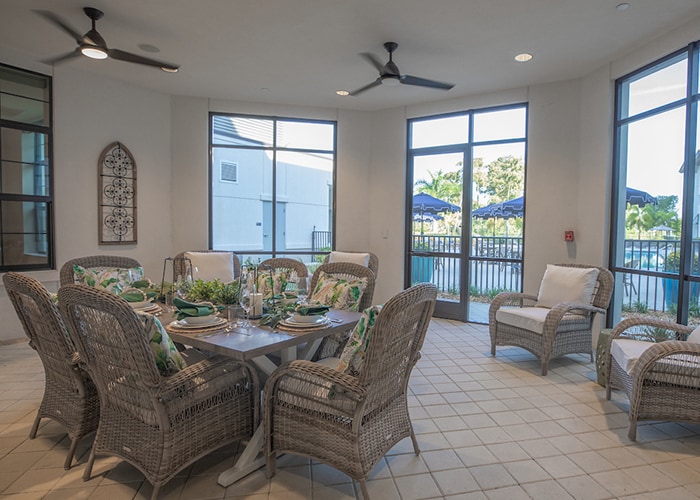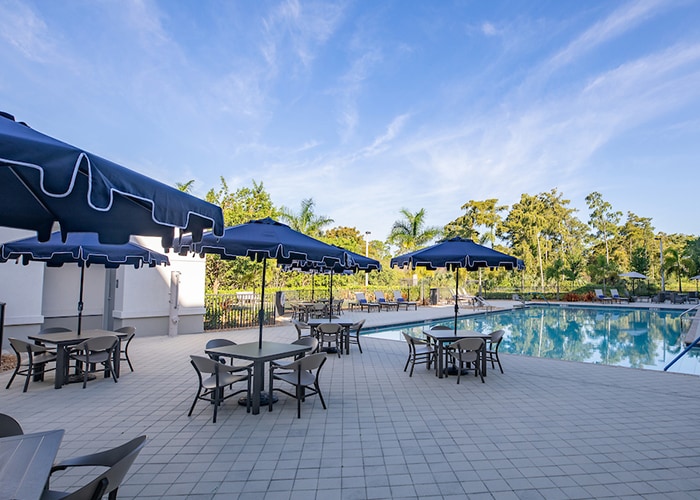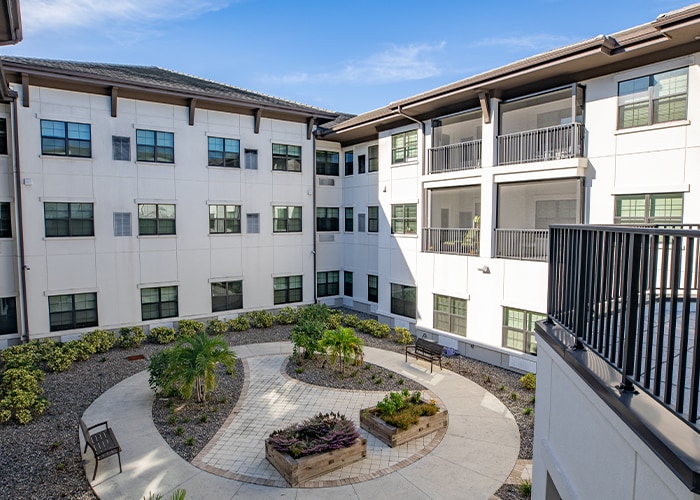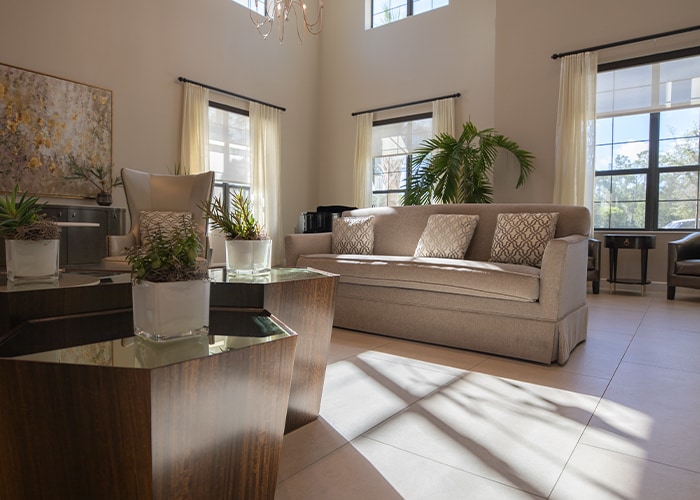Key Takeaways
- Strong leg muscles improve balance, reduce fall risk, and support daily activities.
- Simple at-home exercises can be done safely with proper form and gradual progression.
- Exercises can be adapted for different mobility levels and physical limitations.
- Consistency with 2-3 sessions per week helps build strength over time.
- Senior living communities provide structured fitness programs to complement home exercises.
Simple Leg Exercises to Support Mobility and Independence
Maintaining strong legs becomes increasingly important as you age, directly impacting your ability to walk, climb stairs, and maintain independence in daily activities. Whether you’re living at home or considering independent living options, regular leg strengthening exercises can make a difference in your mobility and quality of life.
You can effectively strengthen your legs at home with simple, safe exercises that require minimal equipment and can be adapted to your current fitness level. These exercises focus on building the muscle groups that support walking, standing, and balance, helping you stay active and confident in your movements.
Why Leg Strength Matters for Senior Health and Independence
Improved Balance and Fall Prevention
Strong leg muscles serve as the foundation of your body, providing stability and support when you walk or change positions. Your quadriceps, hamstrings, and calf muscles all contribute to keeping you steady on your feet. When these muscles are weak, you’re more likely to experience wobbling or unsteadiness.
Regular leg strengthening exercises help train your muscles to respond quickly when you need to catch your balance. This improved reaction time can be the difference between a stumble and a fall. Many residents in independent living and assisted living communities participate in fitness programs specifically designed to enhance balance and prevent falls.
Enhanced Daily Activities and Mobility
Simple tasks like getting up from a chair, climbing stairs, or walking to the mailbox all depend on leg strength. When your leg muscles are strong, these activities feel easier and require less effort. You’ll find yourself moving more freely throughout your day without feeling tired or strained.
Strong legs also support better posture and walking patterns. This means you can walk longer distances, stand for extended periods, and participate in activities you enjoy without discomfort.
Building Confidence in Movement
When you feel strong and stable on your feet, you’re more likely to stay active and engaged in social activities. This confidence extends beyond physical benefits—it impacts your mental well-being and willingness to try new things. You’ll feel more comfortable navigating different environments and participating in group activities.
Safety Guidelines Before Starting Your Exercise Routine
Warm-Up and Cool-Down Techniques
Start each exercise session with 5-10 minutes of gentle movement to prepare your muscles and joints. Simple exercises like marching in place, ankle circles, or seated leg swings can help increase blood flow to your legs. This preparation helps reduce your risk of muscle strain during exercise.
After completing your exercises, spend a few minutes doing gentle stretches. Hold each stretch for 15-30 seconds, focusing on your calves, thighs, and hip muscles. This cool-down period helps prevent stiffness and supports recovery.
When to Use Support and Proper Form Tips
Always have a sturdy chair, wall, or railing nearby for support when needed. There’s no shame in using assistance—it actually helps you maintain proper form and exercise more safely. Focus on controlled, smooth movements rather than rushing through repetitions.
Pay attention to your posture during exercises. Keep your back straight, shoulders relaxed, and core gently engaged. If you feel pain or sharp discomfort, stop the exercise and consider trying a modified version.
Listen to Your Body and Know Your Limits
Start with fewer repetitions and gradually increase as you build strength. Your muscles may feel slightly tired after exercising, but you shouldn’t experience sharp pains or extreme fatigue. Some mild muscle soreness the next day is normal, especially when you’re beginning a new routine.
If you have chronic conditions or haven’t exercised recently, consider checking with your healthcare provider before starting. They can provide personalized guidance based on your health history.
10 Effective At-Home Leg Strengthening Exercises
Seated Leg Extensions
Sit in a sturdy chair with your back straight and feet flat on the floor. Slowly straighten one leg until it’s parallel to the floor, hold for 2-3 seconds, then lower it back down. This exercise targets your quadriceps muscles at the front of your thigh.
Start with 8-10 repetitions on each leg. You can add ankle weights as you get stronger for extra resistance.
Chair Squats
Stand in front of a chair with your feet shoulder-width apart. Slowly lower yourself until you’re just touching the chair seat, then stand back up using your leg muscles. This movement strengthens your thighs and glutes while improving your ability to get up from seated positions.
Begin with 5-8 repetitions and focus on controlling the movement both up and down. Use your arms for balance if needed.
Standing Calf Raises
Stand behind a chair, holding the back for support. Rise up onto your toes, lifting your heels off the ground, then slowly lower back down. This exercise strengthens your calf muscles and improves ankle stability.
Perform 10-15 repetitions, focusing on the lifting and lowering phases equally. You should feel the work in the back of your lower legs.
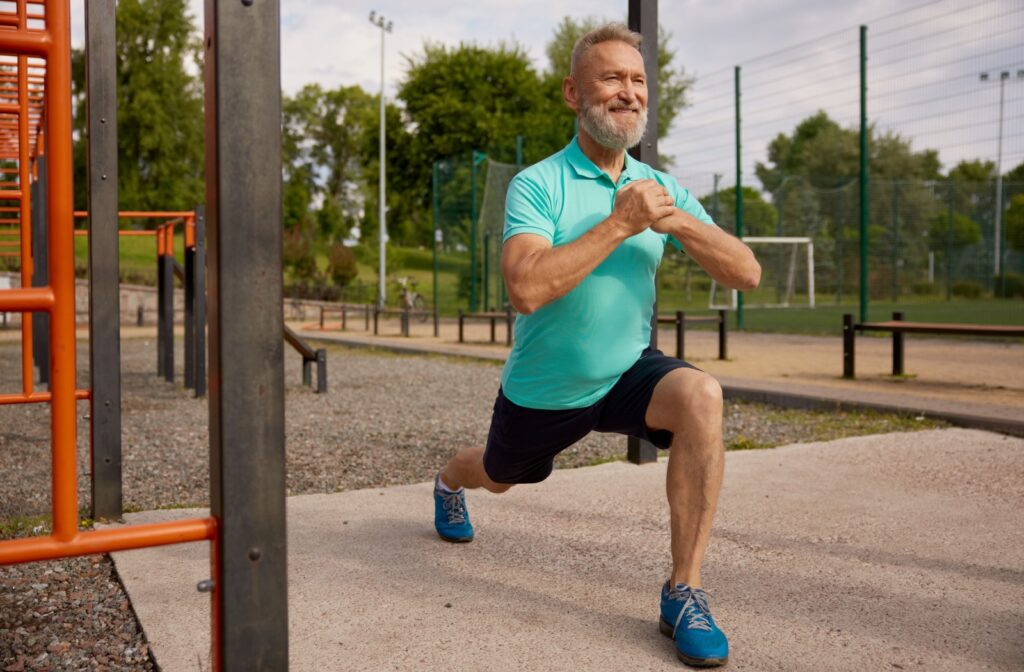
Sit-to-Stand Exercise
Start seated in a chair with your arms crossed over your chest. Stand up without using your hands for support, then sit back down slowly. This functional exercise directly relates to daily activities and builds overall leg strength.
Try for 5-10 repetitions. If this feels too challenging initially, use your hands for light assistance and gradually reduce the support.
Heel Slides
Sit in a chair or lie on your bed with one leg straight. Slowly slide your heel toward your body, bending your knee, then slide it back to the starting position. This gentle exercise improves knee flexibility while working your hamstring muscles.
Complete 8-12 repetitions on each leg. The movement should feel smooth and controlled throughout.
Side Leg Raises
Stand next to a chair or wall for support. Lift one leg out to the side, keeping your toe pointing forward, then lower it back down. This exercise targets the muscles on the outer part of your hip and thigh.
Aim for 8-10 repetitions on each side. Keep the movement small and controlled — you don’t need to lift your leg very high.
Reverse Lunges with Chair Support
Stand behind a chair, holding the back for balance. Step one foot backward, lowering your body until both knees are slightly bent, then return to a standing position. This modified lunge is easier on your knees than forward lunges.
Start with 5-8 repetitions on each leg. Focus on maintaining good posture throughout the movement.
Hip Extensions
Stand facing a chair or counter for support. Slowly lift one leg straight back behind you, squeezing your glute muscle, then lower it back down. This exercise strengthens your glutes and improves hip mobility.
Perform 8-10 repetitions on each side. Keep the movement small and avoid arching your back.
Seated Inner Thigh Squeezes
Sit in a chair with a small pillow or rolled towel between your knees. Squeeze the pillow with your inner thigh muscles, hold for 5 seconds, then release. This exercise targets muscles that are often overlooked but crucial for stability.
Complete 10-15 squeezes. You should feel the work in your inner thigh muscles.
Step-Ups on Low Platform
Use a low, stable step or platform (2-4 inches high). Step up with one foot, bringing the other foot up to meet it, then step back down. This exercise improves leg strength and coordination for stair climbing.
Start with 5-8 step-ups on each leg. Hold onto a railing or wall for balance if needed.
Building Leg Muscle After 70: What You Need to Know
Starting Slowly and Progressing Gradually
Your muscles can grow stronger at any age, but the process takes patience and consistency. Begin with exercises that feel manageable and gradually increase the difficulty over several weeks. This approach helps prevent injury and builds sustainable habits. Understanding how to prevent muscle loss as you age can help you maintain strength and independence longer.
Expect to see initial improvements in how the exercises feel within 2-4 weeks. Measurable strength gains typically develop over 6-12 weeks of regular practice.
Frequency and Repetition Guidelines
Plan to do leg strengthening exercises 2-3 times per week, with at least one rest day between sessions. This schedule allows your muscles time to recover and adapt. Start with 1 set of each exercise and gradually work up to 2-3 sets as you get stronger.
Focus on the quality of movement rather than the quantity of repetitions. It’s better to do fewer repetitions with good form than many repetitions with poor technique.
Adding Resistance Bands for Extra Challenge
Once you’ve mastered the basic exercises, resistance bands can provide additional challenge without requiring heavy weights. These lightweight, portable tools are perfect for home use and can be easily adjusted for different strength levels.
Bands work well for exercises like seated leg extensions, side leg raises, and hip extensions. Start with light resistance and gradually progress to stronger bands as your muscles adapt.
Adapting Exercises for Different Mobility Levels
Exercises for Those with Balance Concerns
If balance is a concern, prioritize seated exercises and always keep support within reach. Chair-based exercises like seated leg extensions, heel slides, and inner thigh squeezes provide excellent leg strengthening without balance challenges.
When doing standing exercises, position yourself near a wall or sturdy furniture. Consider having someone nearby during your first few exercise sessions for added safety.
Modifications for Knee Issues
If you experience knee discomfort, avoid deep squatting movements and focus on exercises with smaller ranges of motion. Seated exercises often work well, as do gentle movements like heel slides and calf raises.
Listen to your body and skip any exercise that causes knee pain. Many exercises can be modified to be gentler on your joints while still providing strengthening benefits.
Bed-Based Exercises for Limited Mobility
If getting out of bed is challenging, several exercises can be done lying down. Heel slides, gentle leg lifts, and ankle pumps can all be performed in bed. These exercises help maintain muscle activity and circulation even when mobility is limited.
Focus on whatever movement is possible for you. Even small amounts of muscle activity provide benefits for strength and circulation.
Creating Your Weekly Exercise Schedule
How Often to Exercise for Results
Consistency matters more than intensity when it comes to building leg strength. Aim for 2-3 exercise sessions per week, spacing them throughout your week rather than doing them on consecutive days. This schedule provides enough stimulus for muscle growth while allowing adequate recovery time.
Each session should last 15-30 minutes, including warm-up and cool-down time. This manageable timeframe makes it easier to stick with your routine long-term.
Combining Leg Exercises with Walking
Walking complements your strengthening exercises perfectly by providing cardiovascular benefits and functional movement practice. Try to include some walking on the days you’re not doing your formal exercise routine.
Even short walks around your home or neighborhood contribute to your overall leg health. The combination of strengthening exercises and walking provides comprehensive leg fitness.
Tracking Your Progress Over Time
Keep a simple record of your exercises, noting how many repetitions you complete and how the exercises feel. This tracking helps you see your progress and stay motivated. You might notice improvements in balance, easier daily activities, or increased exercise repetitions.
Celebrate small victories along the way. Being able to do one more repetition or feeling more stable during an exercise represents real progress toward stronger, healthier legs.
Staying Active as You Age with Seascape at Naples
Strengthening your legs at home doesn’t require expensive equipment or complicated routines. With these simple exercises and safety guidelines, you can work toward improved mobility, balance, and independence in the comfort of your own space.
At Seascape at Naples, we understand the importance of staying active and maintaining your strength as you age. Our community offers structured fitness programs, supportive services, and a welcoming environment where you can pursue your health goals alongside others who share your commitment to wellness.Ready to learn more about how senior living can support your active lifestyle? Contact Seascape at Naples today to schedule a tour and discover how our community can help you maintain your independence while providing the support you need.

